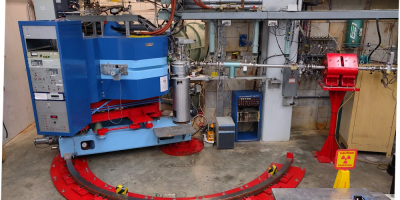Research Projects
The TUNL nuclear astrophysics program distinguishes itself by intertwining experimental and theoretical research. Our theoretical work in this area has not only provided a numerical foundation for modern stellar computer models, but has also guided and motivated many other researchers at radioactive ion-beam and stable-beam facilities around the world. Past examples are the invention of a Monte Carlo method to estimate thermonuclear rates, the first estimations of reaction rates using Bayesian techniques, and the development of statistical methods for performing Monte Carlo reaction network simulations. Many of our nucleosynthesis models, e.g., for understanding abundance anomalies in the globular cluster NGC 2419 or the investigation of presolar grains of classical nova origin are possible only because we designed, and maintain, a first-of-its kind library of thermonuclear reaction rates, called STARLIB. Our theoretical research directly supports experiments at radioactive ion beam facilities, such as FRIB.
Our group is currently focusing specifically on open questions related to globular clusters, classical novae, core-collapse supernovae, and the s-process. We also plan to continue improving and updating the STARLIB thermonuclear rate library as a service to the community. Abundance anomalies in globular clusters represent a long-standing puzzle that will eventually reveal crucial information about the evolution of low-mass stars and the early galaxy. We are planning to address a number of key astrophysical reactions with measurements at LENA, the Split-pole Spectrograph, and HIγS.
Globular Clusters Novae Supernovae The s-process
Experimental and Software Instruments
The TUNL program in nuclear astrophysics, which continues to be well-situated in the national context, was ranked among the top two in the 2013 DOE nuclear astrophysics/nuclear structure Comparative Review. Many of our innovative experiments are performed at the Laboratory for Experimental Nuclear Astrophysics (LENA), the High-Intensity γ-ray Source (HIγS), and the Enge Split-pole Spectrograph in the Tandem Laboratory. At LENA, we aim to measure key reactions directly at the bombarding energies of interest to astrophysics. In many cases, even the high sensitivities achieved at LENA are not sufficient for a direct detection. In those instances, we will use the Split-pole Spectrograph and HIγS to measure the key nuclear structure properties.
Accelerators Gamma Spectrometers Split-pole Spectrograph Software
People
Our research is performed by a tight-knit team of faculty, postdocs, and students (undergraduate and graduate) from the UNC and NC State nuclear astrophysics groups. Click here for more detail of who we are and how to contact us!
Publications
Click here for a comprehensive list of all of our publications since 1982!




